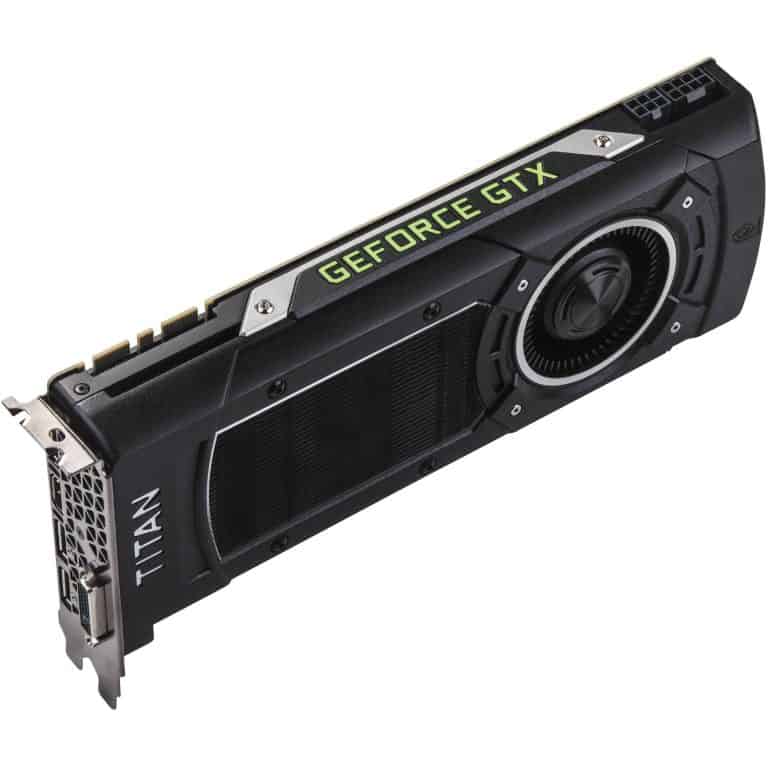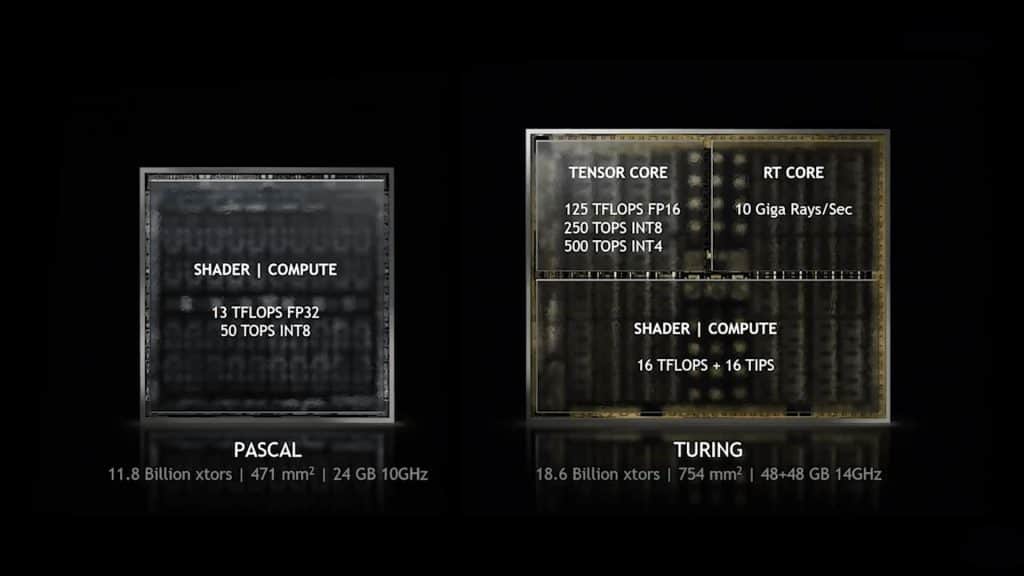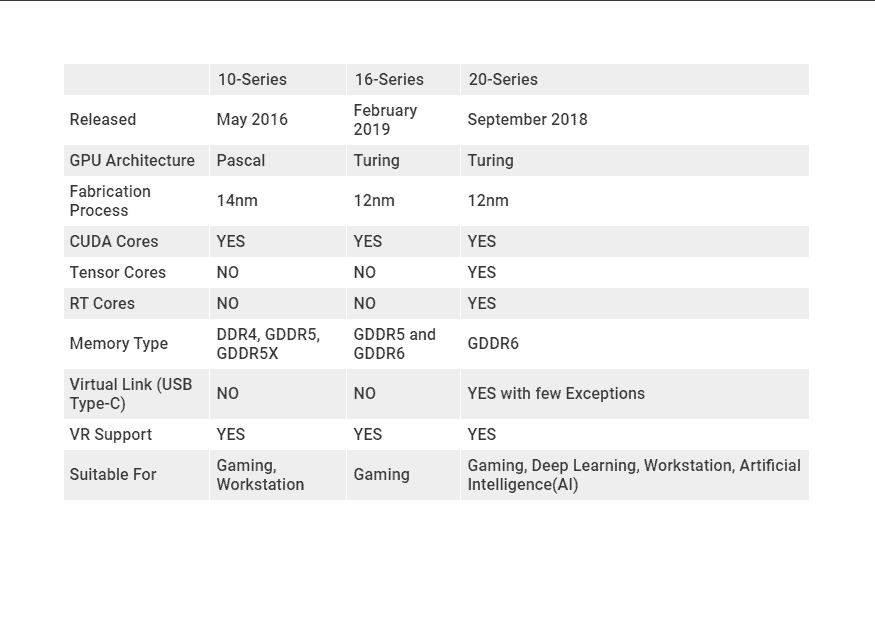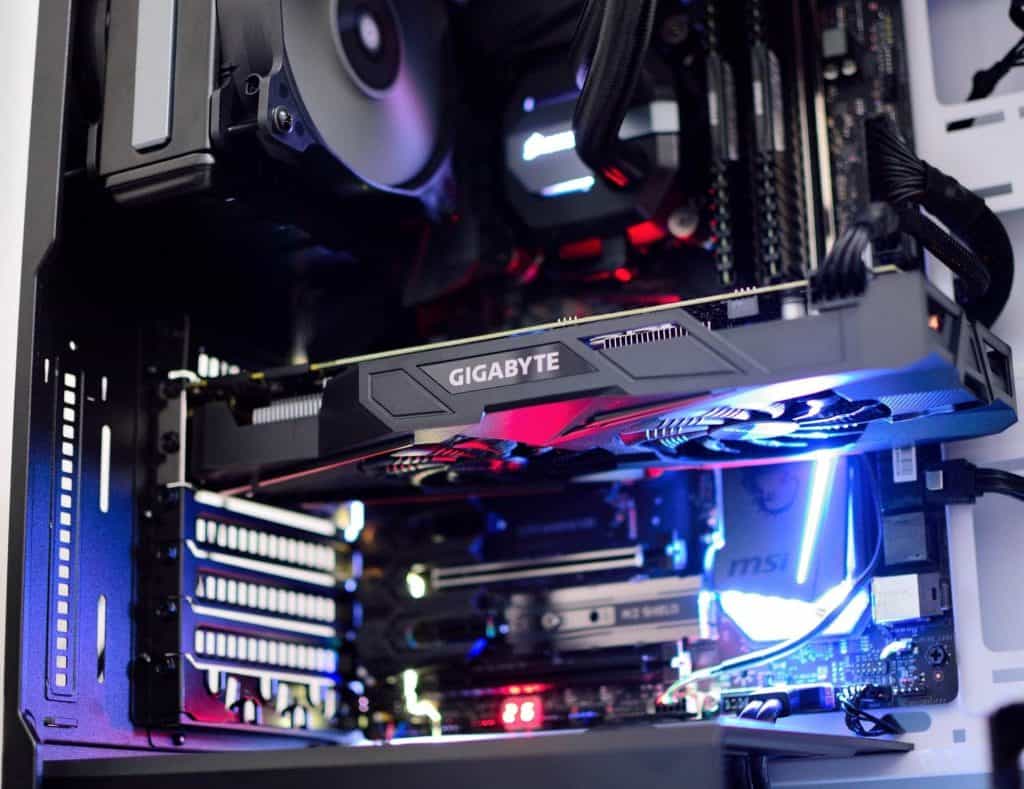Understanding different Graphic Card models and their functions is a pretty complicated task. This is especially true in 2022 when there are a thousand models on the market. In this article, I’ll be discussing the important differences between RTX and GTX cards. I’ll also be telling you if you should buy a GTX card in 2022. If you’re a beginner and confused about buying Nvidia cards, this article will definitely help you get some clarity.
First, Let's start with the Basics
The GTX cards are the standard line of graphic cards by Nvidia. The RTX cards are those with advanced features like Real-time Ray-tracing and DLSS ( Deep Learning Super-Sampling). The Ray tracing helps render realistic shadows, reflections, lighting, and DLSS is a form of anti-aliasing that help reduce FPS drops while running in a higher resolution along with better image quality. The RTX cards promise 30-40% better performance overall.
The RTX cards have RT cores that help Ray-tracing. They also have Tensor cores which are very important for Deep Learning and Machine Learning applications. The RTX cards also support VR Gaming better than the GTX cards because they are AI-enhanced. The RTX technology and Tensor cores are not present in the GTX graphic cards.
Now, what’s the big deal with Ray tracing? This is because Ray tracing is the next big step when it comes to realism. The ray-tracing feature was something that was not there in the previous generation graphic cards because it takes a lot of power, many cores to handle this feature. Thanks to the new architecture in the RTX cards powered by the RT and Tensor cores, this feature is now a reality.

Now, I’ll tell you about the Names
The Nvidia GTX and RTX cards are followed by four numbers in their naming convention. They are named as GTX 1080, GTX 1070Ti, RTX 2070, RTX 2080Ti. The numbers are sometimes followed by either a “Ti” or a “Super”.
The first two digits of the 4-digit number tell you about the series or the generation of the card. The 2080Ti is a 20-series Card. 1660 is a 16-series card and 1080 is the 10-series card.
The last two digits tell you about the model number. Model numbers are fairly obvious. The higher the model number, the better the card is. 2080 is better than 2060. 1070 is better than 1050. 1660 is better than 1650 and so on.
Sometimes you’ll also find cards having “Ti” and “Super” next to their model numbers. These suffixes denote better cards than their parent cards. A 1660 Ti offers better performance than a 1660 Super which is better than 1660. Of course, they will come with that small price premium.

Difference in Performance
The RTX cards (20-series) and the 16-series GTX Cards are based on Turing Architecture. The 10-series GTX cards are based on Pascal architecture.
The Pascal architecture use 16 nm transistors and the Turing architecture use 12 nm transistors. Smaller transistors allow you to fit more of them in the processor, and this directly relates to better performance. The Turing cards are 6 times faster than Pascal cards in ray tracing. They offer 30 percent better performance than the pascal cards overall.
The Turing cards support GDDR6 memory type while the Pascal cards support the GDDR5, GDDR5X, GDDR4 memory types. This makes the RTX cards better in memory related applications involving a higher memory bandwidth which are most of the games and some video rendering and deep learning applications. The RTX cards also have a low TDP rating than the GTX cards thanks to the Turing architecture, this makes them more power-efficient and helps you save some electricity costs.
Here’s a little heads-up. Though the 16-series cards are also based on Turing architecture, they do not have RT cores and Tensor cores to help them in Real-time Ray-tracing. Although Nvidia released this driver update to make them support Ray-tracing, understand they lack the proper hardware for it and hence underperform in ray-tracing applications when compared with the RTX cards.

Games that support Ray Tracing
- Atomic Heart
- Battlefield 5
- Boundary
- Call of Duty: Modern Warfare (2019)
- Control
- Convallaria
- Cyberpunk 2077
- Deliver Us The Moon: Fortuna
- Dying Light 2
- Enlisted
- FIST
- Justice
- JX3
- MechWarrior 5: Mercenaries
- Metro Exodus
- Minecraft
- Product DH
- Project X
- Quake II
- Ring of Elysium
- Shadow of the Tomb Raider
- SYNCED: Off-Planet
- Vampire: The Masquerade – Bloodlines 2
- Watch Dogs Legion
- Wolfenstein: Youngblood
- Xuan-Yuan Sword VII
Games that support DLSS
- Ark: Survival Evolved
- Atomic Heart
- Dauntless
- Darksiders III
- Deliver Us The Moon: Fortuna
- Fear The Wolves
- Final Fantasy XV: Windows Edition
- Fractured Lands
- Hellblade: Senua’s Sacrifice
- Hitman 2
- Islands of Nyne
- Justice
- JX3
- KINETIK
- Mechwarrior 5: Mercenaries
- Outpost Zero
- Overkill’s The Walking Dead
- PlayerUnknown’s Battlegrounds
- Remnant: From The Ashes
- SCUM
- Serious Sam 4: Planet Badass
- Shadow of the Tomb Raider
- Stormdivers
- The Forge Arena
- We Happy Few

Final Thoughts
RTX cards are better than the GTX cards in almost all the ways. They are fast, render better quality images, enable smooth 4K gaming experience and are power efficient. Of course, all this comes at a price. The question is whether you should buy one now or not.
Another important thing you need to understand is that there are only a handful of titles right now which use real-time ray tracing and DLSS to render realistic graphics. So, it will take at least 2 years before we have many games that utilize these features. You absolutely do not want to pay a premium for features you won’t use.
Keeping all this in mind, we’ll consider some scenarios
1.If you already own a GTX card like 1070, 1080 and can afford to purchase RTX cards like 2070 and 2080 for their obvious benefits.
A. I suggest you go ahead with your purchase. You’ll see superb improvement in 1440p and 4K gaming. But if you game only in 1080p and 1440p, it is overkill in my opinion. The GTX 1070 and GTX 1080 are solid for 1440p and even some 4K titles. Although there will be an improvement, it is an overkill for the price you pay.
2. You own a card like GTX 1050Ti and 1060. You want to purchase an RTX card. You also have a budget constraint.
A. In this case, I’ll suggest you go with the RTX 2060. It is the best valued RTX card with a great price to performance ratio. You’ll have all the ray-tracing benefits for a good price.
3. You do not own any Graphic card. You have the budget to purchase an RTX card. You are choosing between a GTX and RTX.
A. This is a no brainer. You should get an RTX card. They are better than the GTX cards in almost all ways.
4. You do not own a graphic card. You have a limited budget and game mostly in 1080p and 1440p
A. I recommend you check out the 16-series graphic cards. These are built just for the 1080p segment. You’ll be able to run most of the games at 1080p at ultra settings without any issues and at 1440p with decent FPS. If you want an RTX card only. Go for 2060. Excellent value for money.
This is all you need to know for now. If you have any queries, reach out to us in the comment section below. we’ll get back to you ASAP.